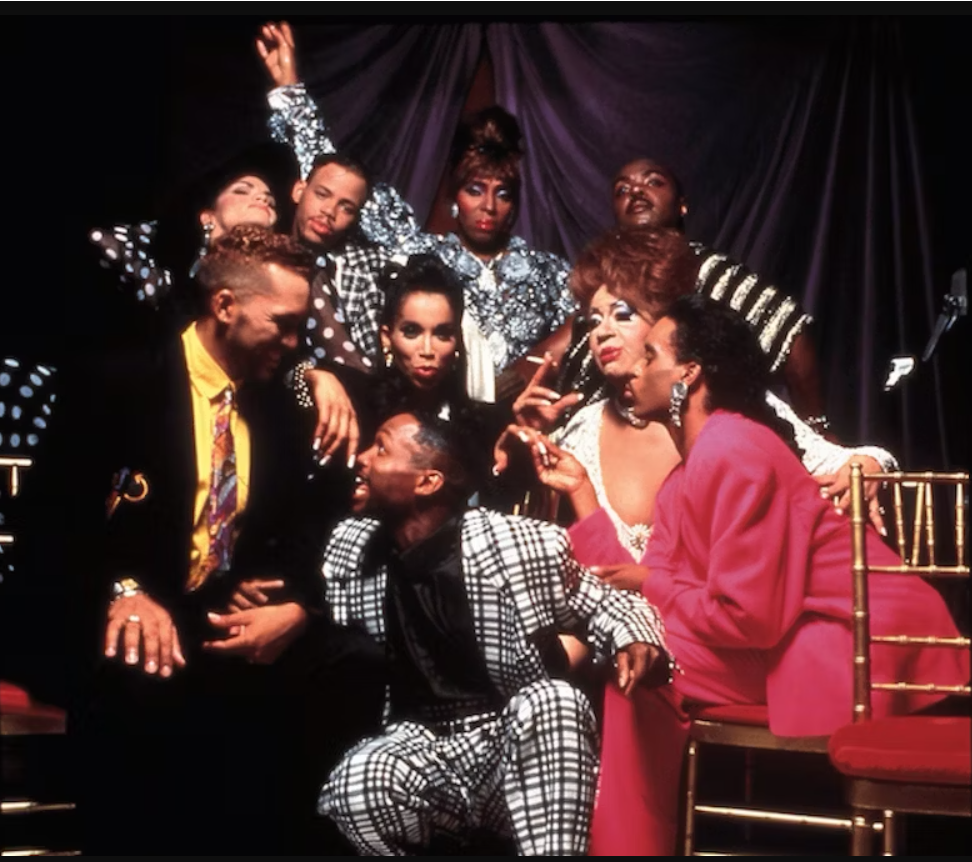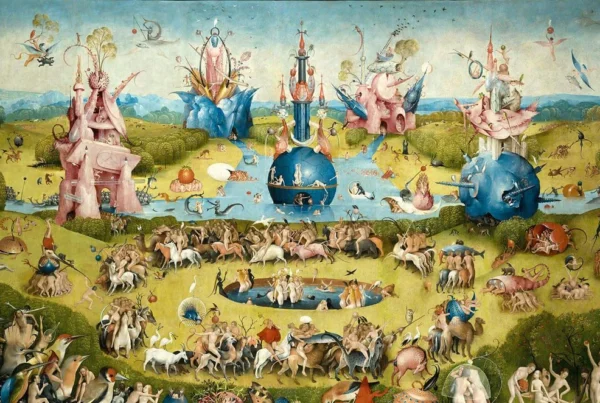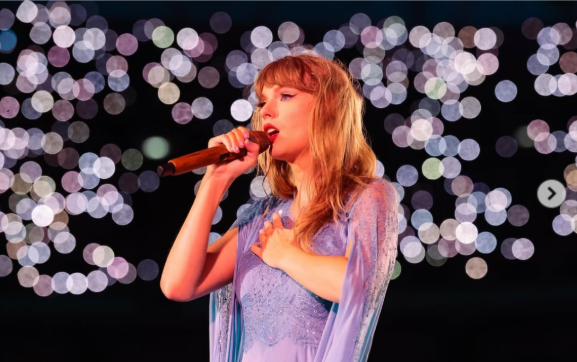
Image Credit: CFDA
By Chloé Cerisier. Culture and Travel.
The word “slay” has quickly become one of the most used by young generations of the twenty-first century. According to the Urban Dictionary, its most popular definition is “killed it, succeeded in something amazing.” But do you know where the word slay actually comes from ?
The original meaning of the word
If you can read “They either slay the man, or themselves die” in Chapter 18 of Wilde’s The Picture of Dorian Gray from the 1890s, it is because that word has actually existed for centuries. “Slay” is derived from the Old English term “slean” which meant “to strike, hit, punch, kill.” After the Duke of Normandy’s conquest of England in the twelfth century, Middle English, with its French and Germanic influences, replaced Old English. In Middle English, “slean” transformed to “slen,” with a similar meaning, and was particularly used in the context of the battles and wars of the European conquests at the time. As “slay” took on this meaning of “killing a person or an animal” for years, myths from several centuries ago can still be found recounting the stories of heroes who slayed their enemies, often mystical beasts or dragons. The 1920s then transformed the word by adding a fun meaning to it. In the era of the Great Gatsby, to slay someone meant that you made them laugh very hard. Still, that is not the meaning of the word as it is used by TikTok stars and teenagers today. For that, we have to dive deeper into the end of the American twentieth century.
The Ballroom scene and queer culture
The term “slay” grew in popularity in the 1970s-1980s in the Ballroom scene, as the result of an African-American and Latino underground LGBTQ+ subculture. The Ballroom culture takes its origin in Black and Latinos drag stars’ wish for a discrimination-free drag scene. Indeed, when the urbanization of the nineteenth century increased independence and anonymity, some cities like New York with its Harlem Hamilton Lodge Ball, saw the emergence of a space for LGBTQ+ communities to reunite : drag balls. William Dorsey Swann, formerly enslaved and the first person known to describe themselves as a drag queen, hosted some of these secret balls in Washington, D.C. from the 1880s. Many of the attendees were Black men, who faced numerous police raids and arrests as the balls went on, mostly clandestinely. The phenomenon spread, and by the mid-twentieth century, racially integrated public drag events were being organised in many cities such as Chicago, New Orleans, New York City, Baltimore, and Philadelphia, bringing hundreds of cross-dressing and gender-nonconforming individuals together.
In 1972, Harlem drag queens Lottie and Crystal LaBeija founded the first house, the House of LaBeija, and drag balls moved into house ballrooms. The ballroom events continued to fight against traditional drag scenes’ instances of racism, and became a space where Black and Latino drag performers could achieve glory, and feel a sense of belonging. The queer youth of color would be adopted into one of these “houses” by so-called mothers and fathers. The parents’ purpose was then to “organise balls and provide support for their children to survive in society as marginalized members of their communities.” Participants to the balls could dance, and notably “vogue,” or show their drag creations and participate in themed competitions. The drag and ball culture are intrinsically linked to the word slay, which developed in its underground sphere, as drag queens and kings used it to compliment one another. This is the meaning we commonly refer to when employing the word nowadays : to have a “killer” look, outfit or makeup, to outperform oneself, originally in drag performances.
The term then came to prominence in the 1990 documentary Paris is Burning, one of the first and most notable examples of gay men and trans women of color gaining greater media representation. It highlighted the New York ballroom scene, where racialized LGBTQ+ individuals showcased their talents through extravagant runway walks and intense dance battles, all while building a tight-knit community in a society that marginalized them. Throughout the film, community members explain key terms from ballroom culture, such as “realness,” “slay” and “shade.” This exposure not only brought the ballroom scene into the spotlight but also introduced its vocabulary to a wider audience, a process further amplified by pop icons like Madonna who adopted aspects of its culture. The ball scene is the birthplace of many phrases and words used today, created at the intersection of oppression and self-expression. With Paris is Burning, ballroom culture and drag, and therefore the word “slay”, entered mainstream culture for the first time.
Rising influence of the word among the masses in the XXIth century
If the word “slay” has long existed in its different meanings throughout the literature and the queer underground scene, it is only recently that it has started to be used in our everyday lives.
Perpetuating Paris is Burning’s heritage, the TV show RuPaul’s Drag Race, airing on American television since 2009, directly brought the drag aesthetic to the living rooms of millions of people who would otherwise never have been exposed to it. The show aims at finding “America’s next drag superstar”, as the drag queen RuPaul plays the role of host, mentor, and head judge for the competition, giving contestants different challenges each week. All participants often use the word “slay” to say the other drags are “killing it” and compliment each other, their outfits, hair, makeup or performances. RuPaul himself employed the word as a commercial strategy for his holiday album Slay Belles and the holiday television special RuPaul’s Drag Race Holi-slay Spectacular. The phrase “Hit the slay button!” even became a viral meme, thanks to the show. And just like that, the reality competition television series democratized the world of drag, and thus brought its vocabulary and terms like “slay” from the underground scene to the wider audience of popular media.
The word later reached an even more mainstream status in 2016 due to its feature in the song Formation by Beyoncé, which was performed at the Super Bowl L halftime show. Formation, in which the artist repeats the line “Cause I slay (slay), I slay (hey),” took “slay” out of the drag scene and into the non-queer Black and feminist spheres. “Slay” has since gained significant popularity and mainstream usage on social media, sparking discussion on its usage as a result.
The importance of African American Vernacular English
Have you heard or said the terms “woke” or “lowkey” at any point in the last few years ? Chances are, the answer to that question is yes. And whether you knew it or not, you were hearing African American Vernacular English (AAVE), also called Black English or Ebonics. Just like “slay”, many words of our vocabulary actually come from African American culture, although people commonly assume they are the result of internet culture.
AAVE is the unique dialect often spoken by the descendants of Africans who were enslaved in the United States, and more largely by Black immigrants. It consists of both singular phrases and unique grammatical structures making AAVE comparable to the language spoken by the Gullah Geechee in the Carolinas, Florida, and Georgia, the Creole from Haiti, and the patois spoken in Barbados and Jamaica. AAVE has evolved over centuries but the rise of the internet and social media has made many aspects of the dialect accessible to a larger part of the American population, bringing it widespread popularity. Thus, much of today’s slang originates in AAVE, and 1980s and 1990s hip hop and rap music, and is now incorporated into social media spaces like X, Instagram and TikTok by non-Black Gen Z people adding AAVE to their vocabularies.
In addition to “slay”, ballroom and queer black culture pushed the popularity of many slangs such as “giving”/‘it’s giving,” “serve,” “yas,” “queen,” “tea”/“spill the tea,” “shade,” “ate”/“ate and left no crumbs” and “periodt.” Outside of the ball scene, the Gen Z lexicon also borrowed other AAVE words from the early twentieth century such as the habitual “be”/“be like,” “lit,” “cool,” “bruh,” “cap”/“no cap,” or “tripping.”
But if “slay” has been used since the 1970s in the ballrooms, just like many other words, it is today more often associated with the broader queer community, regardless of race and its roots in ballroom culture. Many African-Americans therefore hope to bring more awareness to the topic, as what originated from racist discrimination has now become trendy.
The importance of acknowledging the discrimination queer people still face today
If, as highlighted by Columbia linguistics professor William Foley, it is very hard to control how language evolves, as “today’s slang becomes tomorrow’s everyday language,” the racialized queer people that popularised the word “slay” and its current meaning are still facing widespread discrimination today. A 2020 report from the American Civil Liberties Union (ACLU) revealed that Black Americans are much more likely to experience police violence, with Black people being three times more likely to be killed by police than white people. This is compounded by a persistent racial wealth gap, as for every $100 in wealth held by white households, Black households hold only $15. In the LGBTQ+ community, discrimination is also widespread. The 2021 Human Rights Campaign (HRC) report found that nearly one in three LGBTQ+ individuals experienced discrimination in the workplace, at a time of increased anti-trans policies. The National Center for Transgender Equality reported that more than one in four trans people have experienced a bias-driven assault because of their transidentity. Those rates are even higher for trans women and people of color.
These data clearly underscore the fact that systemic inequality for both Black and queer individuals remains deeply ingrained in society today, which is why many individuals try to shift the focus of the conversation to the historical meanings of the words we use in our daily lives. Because slay is not just a compliment, it’s a whole heritage of queer black culture.
Other posts that may interest you:
- The “Crazy Fangirls” Probably Made Your Favorite Artist
- With the AWSN, Has the Time Finally Come for Women’s Sports ?
- The Eras Tour : La tournée de tous les records tire sa révérence
- Is Brat Summer Really Over?
- “Now and Then” aux Grammy Awards : Quand l’intelligence artificielle ressuscite les Beatles
Discover more from The Sundial Press
Subscribe to get the latest posts sent to your email.




